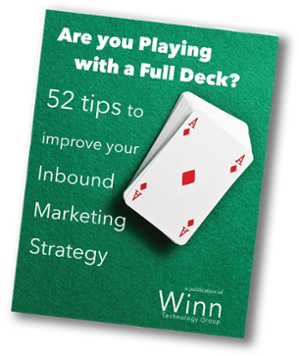 Landing pages are a key component of any inbound marketing strategy and should be evaluated closely. Creating a successful landing page will take a good deal of trial and error before you determine what gets your audience to respond. Here we’ve outlined a 10 step process for creating high converting landing pages.
Landing pages are a key component of any inbound marketing strategy and should be evaluated closely. Creating a successful landing page will take a good deal of trial and error before you determine what gets your audience to respond. Here we’ve outlined a 10 step process for creating high converting landing pages.
1. Headlines
There should be multiple headlines and subheadings that show the value of your offer and clearly direct visitors to download your content. Much like blog titles and email subject lines, you want your headlines to create excitement and provide an accurate value proposition.
2. Communicate Value
Clearly communicate the value of your offer and how your visitor stands to benefit from downloading it. Use plain simple language with detailed instructions for how they can receive your content. Set accurate expectations for the information contained within the piece and include highlights of your work on your landing page using statistics that back up your findings.
3. Singular Offer
Your landing page should show that you have the solution for a specific pain point that your prospect is experiencing. Each landing page should only have one content offer and you should create multiple landing pages for each content piece for A/B testing. You want your prospect’s sole focus to be the offer housed on a given landing page.
4. Form Length
The length of your form should mirror the value of your offer. For example, the form for a case study download should have far fewer fields than that of a 10 page long whitepaper. Too many fields can hurt conversion rates and drive away potential business. Utilizing smart fields within your forms will allow you to capture additional information from repeat visitors. This will help you gather further insight into their pain points, interests and what stage of the buying cycle they are in.
5. Segmentation
If your organization targets multiple verticals with the same offers, it is a good idea to segment your audience and have landing pages that speak directly to their industry. This is particularly important with email marketing campaigns. Using separate, more concise landing pages for email offers will also help in converting busy prospects during peak business hours.
6. Personalization
Personalization is key in many different aspects of inbound marketing and landing pages are no different. Segmentation allows you to personalize landing pages for industries, job titles and even specific companies. Taking an account based marketing approach and including the name and branding of a particular target company can be extremely effective.
7. Privacy Terms
Including a disclaimer regarding the use of the information your prospect is being asked to provide can also factor into conversion rates. With identity theft and other online security issues, it is important to let your audience know their information will not be misused.
8. Build Credibility
Highlighting certain prolific partnerships and clientele on your landing pages will help build the credibility of your offer. Simply adding their logos to your landing page will show that you’re a credible organization. Any relevant certifications or awards can also be displayed to show your standing within your industry.
9. Quality Control
As with any other piece of content, your landing pages should be edited thoroughly. Additionally, the functionality of calls to action, forms and thank you pages should be tested on a regular basis. Losing prospects due to technical issues can be harmful to your brand, particularly those in the B2B tech space.
10. A/B Testing
Each offer should have multiple landing pages with different headings and copy. Those that perform at the highest rate should then be used for your entire audience. Simple variations can make all the difference in conversion rates. Creating multiple pages for each offer will help you understand what works best for your audience.
Founded in 1990, Winn Technology Group is a leading provider of global, multi-channel marketing solutions for the technology industry. For both direct and channel sales, Winn supports demand creation, account-based marketing, channel management, digital marketing, social media, teleprospecting, lead nurturing, event marketing, database services, and inbound response management.





